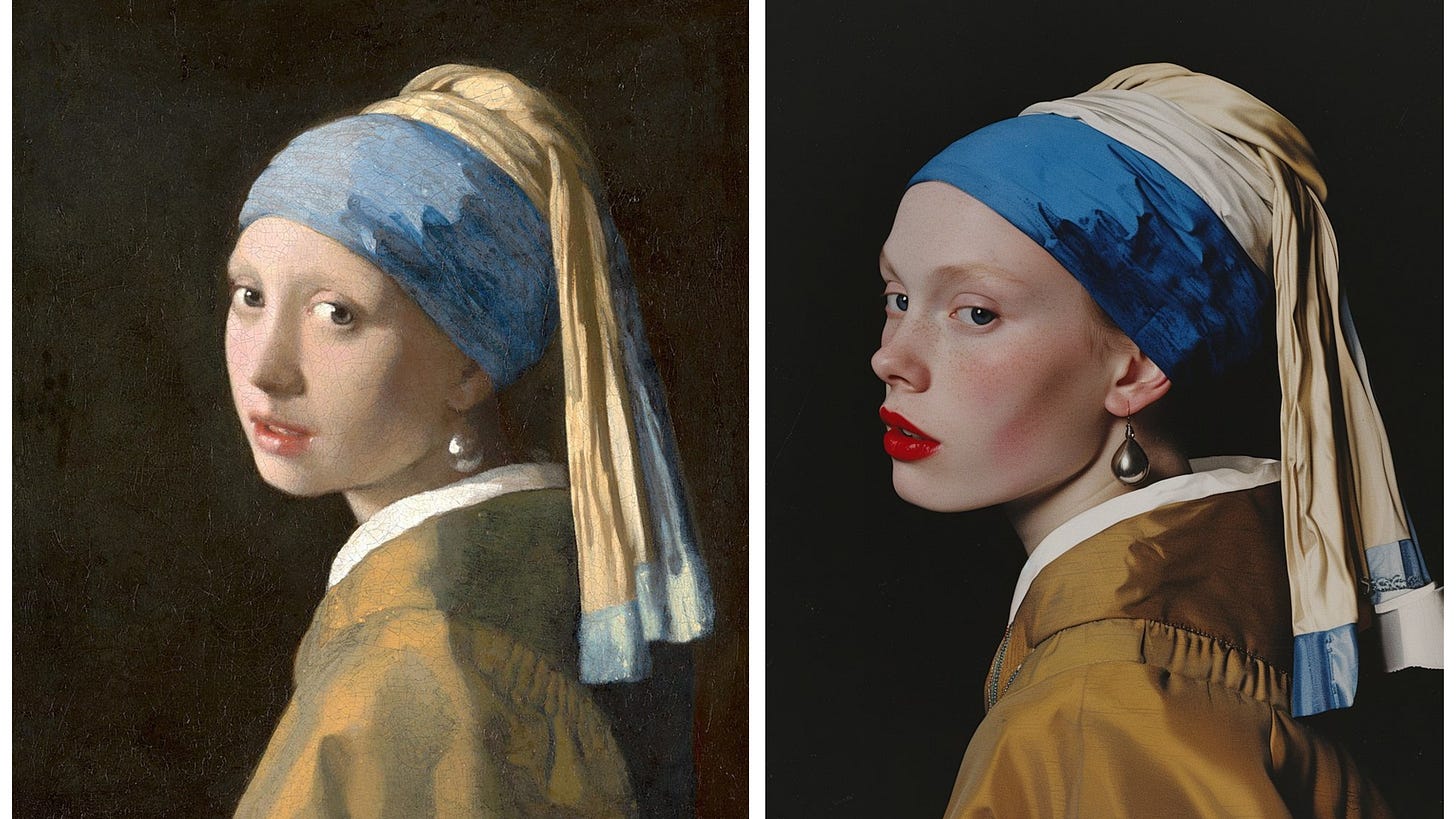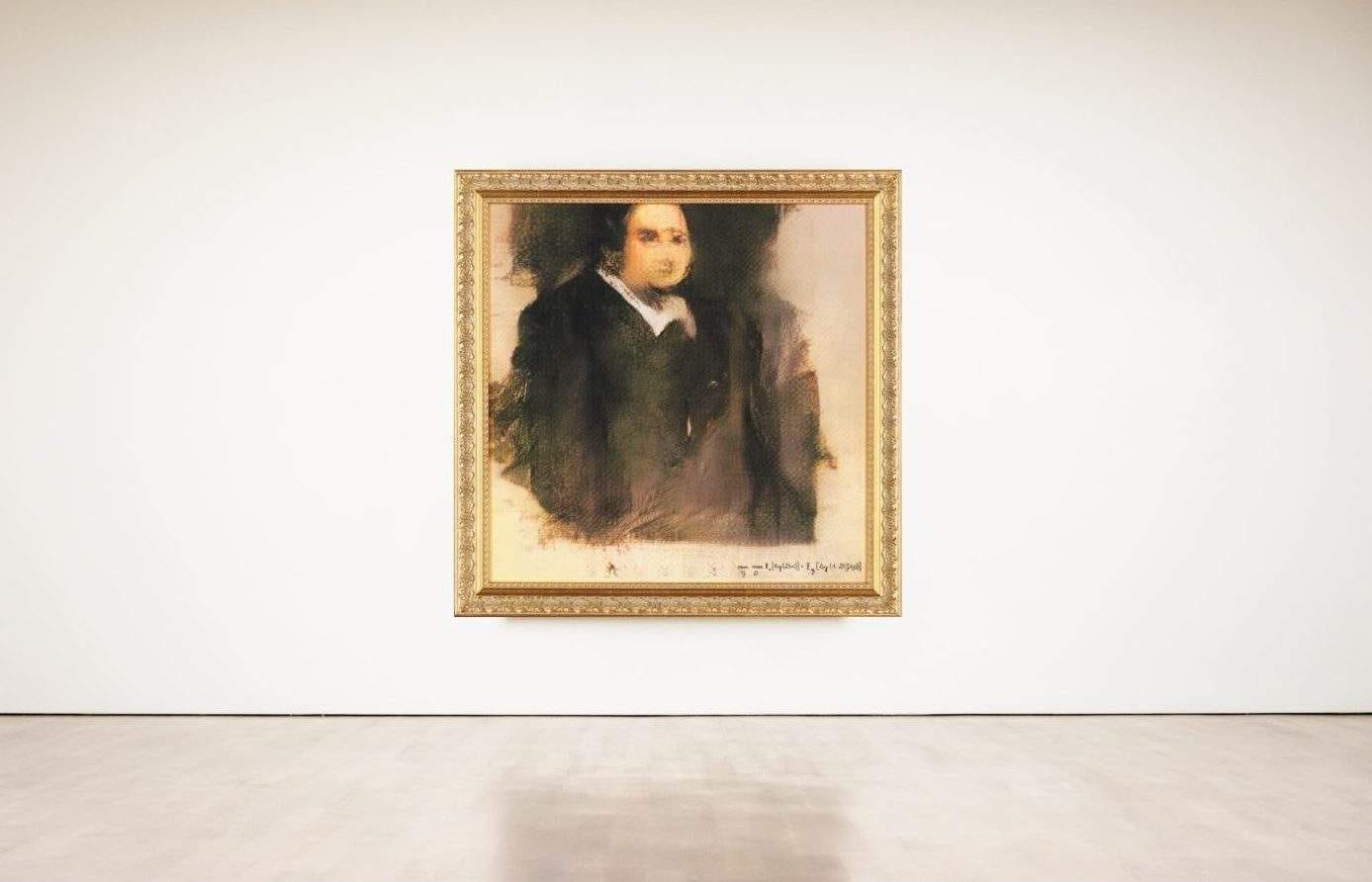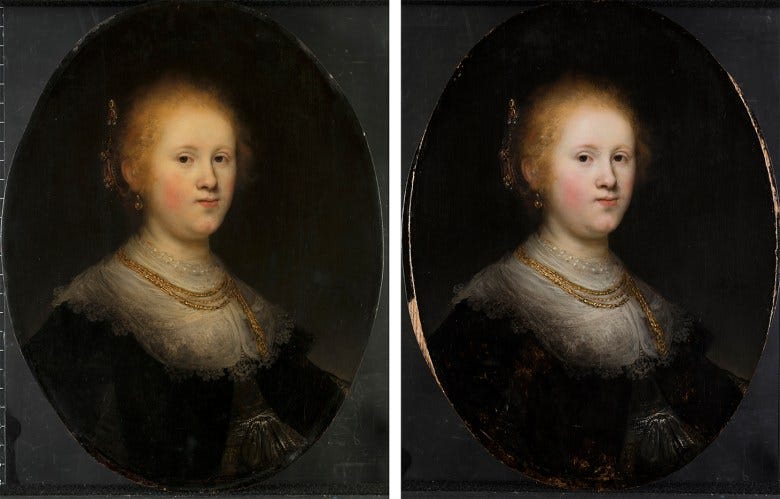
You've seen Vermeer's "Girl with a Pearl Earring" everywhere—dorm room posters, coffee mugs, endless parodies. It's one of those paintings that's become part of our cultural wallpaper. But what if we could give her a modern makeover? That's exactly what I did using AI. I adorned her with fiery red lips and a gaze that says she knows something you don't. It's still unmistakably Vermeer's girl, but she's stepped out of the 17th century and into ours.
This isn't just a cool trick to show off at parties. It's a window into how technology is changing the way we think about art, creativity, and what it means for a piece of art to be "done." And weirdly enough, this digital art revolution has more in common with the original Renaissance than you might think.
We usually picture Vermeer as this lone genius, just a guy with a brush and a dream. But that's not the whole story. Vermeer was actually a bit of a tech geek for his time. Art historians think he probably used a camera obscura—basically an old-school projector—to nail those precise perspectives and lighting effects that make his work pop. He was playing around with lenses, mirrors, and cutting-edge pigments like he was tinkering in a 17th-century version of a Silicon Valley garage.
Vermeer's studio wasn't just an artist's workshop; it was more like a lab. He controlled light with curtains and screens, setting up his space in a way that would make modern photographers nod in approval. And those colors? That deep blue in "Girl with a Pearl Earring" that catches your eye was the iPhone 14 Pro of pigments back then—made from crushed lapis lazuli and was crazy expensive.
So Vermeer and his Renaissance pals weren't just artists—they were pushing the boundaries of what was technically possible in their quest to capture reality on canvas. Sound familiar? It should, because that's exactly what we're doing now with AI.
When I use AI to reimagine past work, I'm not trying to replace anyone’s genius. I'm building on it, using today's tech to explore new possibilities, just like Vermeer did with the tools of his time.
But AI isn't just letting us remix old masterpieces. It's changing how we think about making art in the first place. You know how sometimes you look back at something you wrote or created a year ago and think, "Who even was that person?" Joan Didion once wrote about outgrowing her past selves, and as a creator, I feel that way about my work all the time. A piece I poured my heart into last year might feel like it was made by a stranger now. We're always changing, growing, evolving.
In the past, that evolution was slow. A Renaissance artist might spend years on a single painting, their own growth subtly influencing the piece over time. They were pretty much locked into one vision, one moment frozen in paint and time.
AI flips that script. Now, I can take a piece I made months or years ago and reimagine it in minutes. I can play with different styles, moods, eras—all with a few keystrokes. It's like having a time machine for my creativity, letting me have a conversation with my past and future artistic selves.
This fluidity messes with our idea of what it means for art to be "finished." Is Vermeer's girl ever really done? Or is she part of an ongoing conversation, ready to be reinterpreted by each new generation, each new technology?
Pablo Picasso once said, "Art is never finished, only abandoned." With AI, we don't even have to abandon our art anymore. We can revisit it, reimagine it, breathe new life into it whenever inspiration strikes.
Some critics argue that AI-generated art lacks soul, that human touch. They say it's just copying, not creating. But isn't all art, in some way, a form of copying? Vermeer didn't invent faces or the way light bounces off fabric. He observed, he interpreted, he built on what came before. AI is doing the same thing, just at a scale and speed that would make Vermeer's head spin.
Take, for example, the work of Refik Anadol. He uses AI to create mind-bending data sculptures and immersive installations. One of his projects, "Machine Hallucinations," uses AI to process millions of images of New York City, creating a hypnotic, ever-changing cityscape that never exists the same way twice. Is it any less "art" because a machine helped create it?
Or consider the AI-generated portrait "Edmond de Belamy," created by the art collective Obvious. It sold at Christie's for $432,500 in 2018. The portrait, looking like a smudged, dreamlike version of an 18th-century painting, was created using a type of AI called a Generative Adversarial Network (GAN). It's not a copy of any existing painting, but a new creation born from the AI's "understanding" of thousands of portraits.

AI isn't replacing human creativity; it's supercharging it. It's giving artists new tools to explore, new ways to express themselves. It's also democratizing art, allowing people who might never have picked up a brush to create stunning visuals. And for pros—It's opening up whole new worlds of possibility, pushing our creative boundaries in ways we're only starting to understand.
Think about it: with AI, we can explore lighting conditions that would be impossible in the real world. We can seamlessly blend styles from different eras. We can even "complete" unfinished works by old masters, giving us a glimpse of what might have been.
Imagine if we could see Leonardo da Vinci's "Battle of Anghiari," a lost masterpiece known only through preliminary sketches and descriptions. AI could help us visualize what it might have looked like, based on Leonardo's other works and contemporary accounts. It's not the same as finding the original, but it's a new way to engage with art history, to bring lost works back to life in some form.
And just for fun, I prompted Midjourney to create a “finished” version of The Battle of Anghiari using my personal style code—this is the result (below):
This tech isn't just changing how we create art; it's changing how we understand and appreciate it. Art historians are using AI to analyze brushstrokes, uncover hidden layers in paintings, and even attribute works to specific artists with crazy accuracy. We're gaining new insights into the techniques of artists long dead, bridging the gap between their time and ours.
For instance, AI helped authenticate a long-disputed Rembrandt, "Portrait of a Young Woman," by analyzing the brushstrokes and comparing them to known Rembrandt works. The AI confirmed what some experts had suspected—it was indeed by the master's hand.

Standing at the edge of this new artistic frontier, it's natural to feel both excited and a little freaked out. Change is always unsettling, especially when it comes to something as deeply human as art. But every artistic revolution throughout history has been met with skepticism at first. People mocked the Impressionists, dismissed photography as a soulless mechanical process, and I bet some Renaissance purists thought Vermeer's optical tricks were cheating.
When photography was invented, painter Paul Delaroche allegedly declared, "From today, painting is dead." Spoiler alert: it wasn't. Instead, photography freed painting from the need to perfectly represent reality, paving the way for movements like Impressionism, Cubism, and Abstract Expressionism.
Similarly, AI isn't killing art. It's pushing it into new territories, asking us to reconsider what art is and can be. As the artist David Hockney put it, "New ways of seeing mean new ways of feeling." AI is giving us new ways of seeing—and creating—art.
Yet each of these innovations expanded our understanding of what art could be. They didn't replace what came before; they added to it, made it richer. AI is set to do the same.
So the next time you see an AI-generated artwork, don't write it off as "not real art." See it as part of a long tradition of artists using the best tools available to push the boundaries of creativity. See it as a conversation between past and present, between human and machine, between what is and what could be.
The canvas is evolving. It's becoming more fluid, more dynamic, more alive than ever before. And we, as artists and art lovers, get to be part of this wild ride. The question isn't whether AI belongs in art. The question is: how will you use these new tools to express your unique vision? How will you add your voice to this ongoing dialogue that stretches back to Vermeer and beyond, and reaches forward into a future we're only beginning to imagine?
As the poet Rainer Maria Rilke wrote, "The future enters into us, in order to transform itself in us, long before it happens." With AI, we're not just creating art—we're creating the future of art. We're transforming the way we think about creativity, authorship, and the very nature of artistic expression.
After all, as Picasso also said, "Every act of creation is first an act of destruction." AI is breaking down our preconceptions about art, clearing the way for new forms of creativity we can't yet imagine. It's up to us to embrace this destruction, to see it not as an end, but as a beginning—a chance to redefine what art can be in the digital age.
So go ahead, give Vermeer's girl those red lips. Remix a Rembrandt. Collaborate with an AI to create something entirely new. You're not just making art—you're part of an artistic revolution that's been centuries in the making. And the best part is, we're just getting started.






No one makes AI art, you are not “creating” anything. A GPU in some data center makes what you tell it to make. There is no creativity beyond changing out and reordering adjectives. At the fundamental level I see it as being no different then comissioning art from an artist. You describe to them what you want and they create it, it’s absurd to think the one describing the art the same as the creator of the art.
That’s not to say AI art is entirely bad but I will never see someone who generates AI art as any form of an artist.